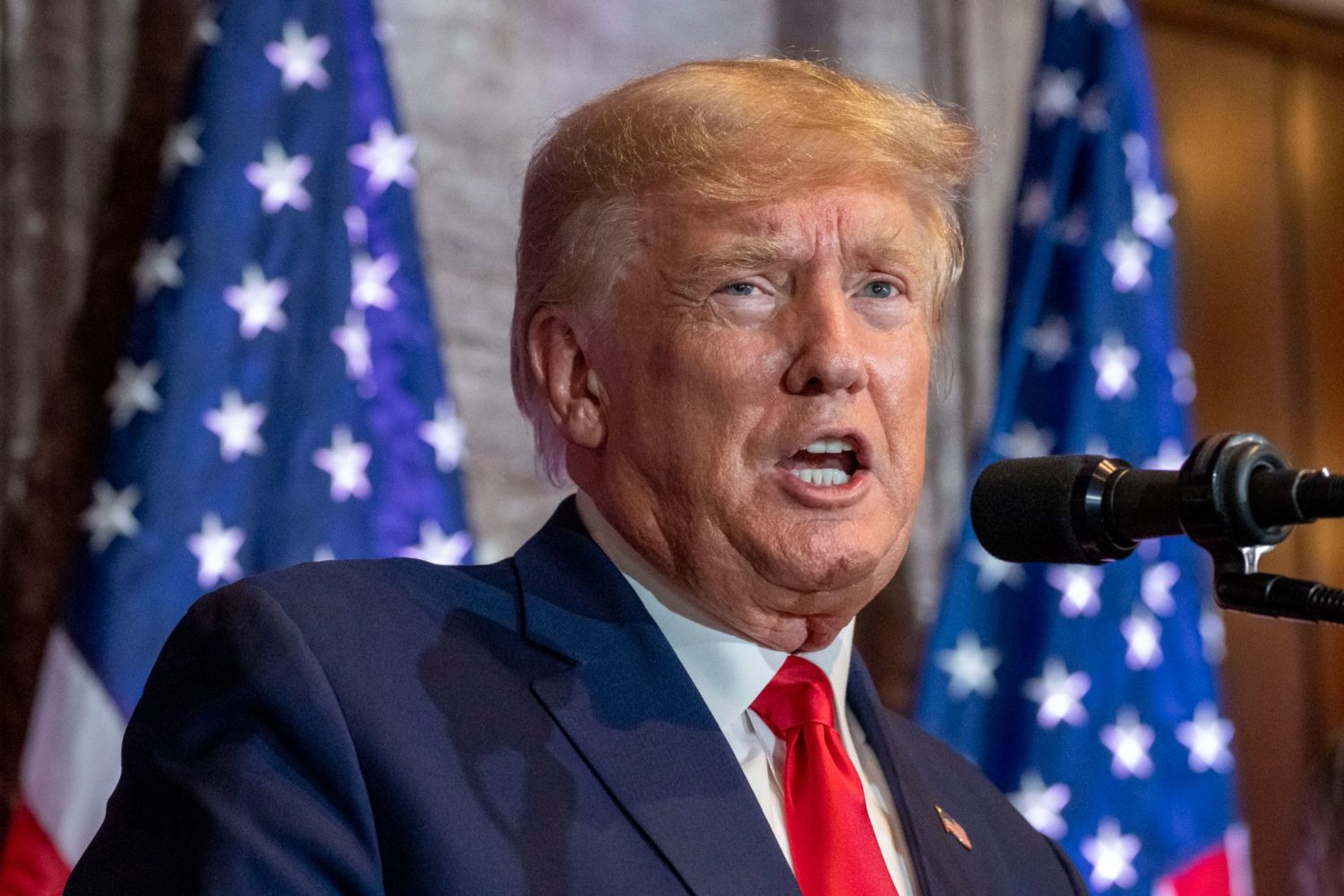Former President Donald Trump, who continues to falsely call the 2020 election “rigged,” pointed to litigation in Los Angeles County as one sign that the election wasn’t fair.
“Let’s ask Rupert Murdoch — So how can the election have been ‘fair and balanced’ if Los Angeles County agreed, during litigation, that there were 1.2 million ineligible voters after the election? And that’s just the tip of the iceberg. Our elections are Third World!” Trump wrote on Truth Social on Feb. 28.
Trump linked to an article by Judicial Watch, a conservative activist group that reached a settlement in 2019 with Los Angeles County to clear its voter rolls of longtime inactive voters.
But Trump’s statement could create the impression that having inactive voters on the rolls signals an unfair election, and he hasn’t provided evidence to support that allegation.
Trump didn’t directly state in his post that he was referring to the 2020 election as unfair, but it seems likely he was talking about that election because after that race he feuded with Fox News, which has “fair and balanced” as its former motto.
Trump attacked Fox News in 2020 after it accurately called Arizona for Joe Biden. Murdoch chairs Fox News’ parent company. The recent release of messages between Fox News pundits and executives showed that some at the network knew post-election statements by Trump allies were wrong, but the network aired them anyway. Murdoch told an editor at the New York Post that some of Trump’s statements were “bull—- and damaging.”
The messages have been released as part of Dominion Voting Systems’ defamation lawsuit against Fox News.
We emailed a Trump’s campaign spokesperson, Steven Cheung, to ask for his evidence and what year Trump was referring to and did not get a response to that question.
“Having ineligible voters on voting rolls is a clear threat to election integrity,” Cheung said.
Trump has long spread falsehoods about voter fraud in California and about what the legal settlement means.
Federal law has rules about removing inactive voters
The National Voter Registration Act of 1993 requires states to register eligible U.S. citizens when they obtain a driver’s license.
Unsurprisingly, these “active registered voters” often move from the address in their voter file without informing election officials, said Judd Choate, Colorado election director who teaches classes on the act.
If the state learns that voters have moved without providing a new address, that state can “inactivate” that voter’s registration unless or until those voters update their registration or vote in a future election.
The National Voter Registration Act prohibits states from canceling inactive voter registrations until the state holds that registration in the inactive status for two election cycles. (A few states are exempt from the act.)
Every state following the act will have thousands or millions of inactive voters. For example, Trump’s home state, Florida, inactivated about 375,000 voters in 2022 and as of August 2022 had more than 1 million inactive voters.
Having inactive voters is a “good sign,” Choate said. It means that election officials are working to identify voters who no longer live there and properly inactivate them under federal law.
“If President Trump took my class, his posting on Truth Social would receive an ‘F,’” Choate said.
Judicial Watch and Los Angeles County reached a settlement to clean up voter rolls
In January 2019, Judicial Watch, Los Angeles County and the California secretary of state reached a settlement agreement that required the county to remove inactive registrations in compliance with federal law.
Led by attorney and Trump supporter Tom Fitton, Judicial Watch has filed numerous lawsuits challenging jurisdictions over voter rolls.
The agreement said that all parties agreed there was no admission of liability or wrongdoing by the state or county. It doesn’t mention voter or election fraud.
In accordance with that settlement agreement, the county sent a Feb. 15 update to Judicial Watch that said there were about 5.6 million active voters on the rolls and about 527,000 inactive voters, but zero who had been inactive for two consecutive federal elections.
The county removed about 1.2 million voters from the inactive voter list following the 2022 general election, which aligned with federal requirements and the inactivity through two federal election cycles (2020 and 2022), said Mike Sanchez, a Los Angeles County elections office spokesperson.
Sanchez said, “Any voters who were inactive in 2020 who appeared to vote would have been activated; therefore none of those (who) moved from ‘inactive’ to ‘cancel’ had voted at any time in the period covered by two federal election cycles.”
We found no evidence that the existence of inactive registrants meant that the election was unfair to Trump. Democratic candidates regularly win elections in left-leaning Los Angeles County. Biden won the county by more than 1.8 million votes.
Trump’s statement about “ineligible voters” could create the impression that they were ineligible to vote because they didn’t meet basic requirements, such as being 18, a U.S. citizen and a county resident. That’s different from an “inactive voter” who at one time was eligible, but became inactive.
Nationwide, inactive registrations as a percentage of all registrations were about 9% in 2022. California was an outlier on the high side with about 16% — around the same as West Virginia.
Los Angeles County is America’s largest election jurisdiction, so it follows that it would have a disproportionate share of inactive voters, said Rachel Orey, an elections expert at the Bipartisan Policy Center, a Washington, D.C.-based think tank.
“The presence of inactive voters does not indicate fraud: a voter’s categorization as ‘inactive’ means that they are eligible and registered but have not tried to vote in recent elections and failed to respond to an official mailer from the election office,” Orey said.
Our ruling
Trump said that the 2020 election could not have been fair because “Los Angeles County agreed, during litigation, that there were 1.2 million ineligible voters after the election.”
Los Angeles County reached a settlement with Judicial Watch in 2019 agreeing to clear the voter rolls of inactive voters.
The county cleared about 1.2 million inactive voters after the 2022 election because they had not voted in recent elections, including the 2020 election.
Trump’s statement that the settlement signals that the election was unfair is also incorrect. Trump lost Los Angeles county by about 1.8 million in 2020. The people who were later removed from the rolls did not vote at all, so they had no influence on the outcome.
We rate this statement False.
This fact check was originally published by PolitiFact, which is part of the Poynter Institute. See the sources for this fact check here.







